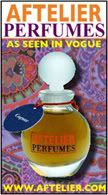
The noble Russian émigrés who fled the Revolution of 1917 did so without much ease of a financial safety net. Despite their wealth, lineage, and social standing, many of these political refugees were suddenly forced to take ordinary work in order to survive. After abandoning their palaces and extravagant lifestyles, they dispersed into a worldwide diaspora. Large concentrations of the displaced centered around the cities of Manhattan, London, Paris, Berlin, and Shanghai. Some sold lamps, others sold tobacco, one lived in a grace-and-favour estate in England and one became--briefly-- a fashion designer.
Depending on which historical account you believe, the fashion designer was also a murderer. What no history disputes is that the designer played a very large part in a murder plot, and that upon this plot the wheels of history turned.
The flamboyant  Prince Felix Yusupov was born in 1887 to a very old, very wealthy family that had descended from Abubekir-ben-Raioc. As a child he developed a love for the silks, furs, and velvets of his mother's lavish wardrobe; as a young man he would often dress himself similarly. After spending a year as a putative student at Oxford, he returned to Russia in 1912 with very decided tastes in Moorish and Oriental design. He was also a proponent of the Russian style, an ornate traditional manner of court dress.
Prince Felix Yusupov was born in 1887 to a very old, very wealthy family that had descended from Abubekir-ben-Raioc. As a child he developed a love for the silks, furs, and velvets of his mother's lavish wardrobe; as a young man he would often dress himself similarly. After spending a year as a putative student at Oxford, he returned to Russia in 1912 with very decided tastes in Moorish and Oriental design. He was also a proponent of the Russian style, an ornate traditional manner of court dress.
Despite what has been alleged to be a strong bisexual streak, in 1914 Yusupov married Princess Irina Alexandrovna Romanova, the only niece of Tsar Nicholas II. A daughter, also named Irina, was born in 1915. The family lived in St. Petersburg, in a wing of Yusupov Palace on the Moika Canal.
A year after the birth of Irina, Felix became a protagonist in the plot to murder Rasputin. Rasputin was a Siberian peasant whose stock in trade was faith healing and spiritualism. He entered the Imperial court at the behest of the Empress Alexandra, whose son Alexei suffered from hemophilia. As the only son of Nicholas and Alexandra and the heir to the Romanov dynasty, Alexei and the state of his health were of paramount importance. After Rasputin "healed" the tsarevich in 1912 (by telegram), the Empress placed the f ate of both her son and her nation in his hands. Nicholas, a weak and ineffectual leader, was powerless against the Empress's spiritual beliefs. Rasputin began to dispense political advice, and when in 1915 he insisted Nicholas take command of his army at the front, the tsar left the inexperienced Empress as Regent.
ate of both her son and her nation in his hands. Nicholas, a weak and ineffectual leader, was powerless against the Empress's spiritual beliefs. Rasputin began to dispense political advice, and when in 1915 he insisted Nicholas take command of his army at the front, the tsar left the inexperienced Empress as Regent.
Yusupov, like many of his peers, was unable to watch as the court deteriorated into a shambolic ruin mocked by the nation. Rasputin, it was said, had defiled the Empress and her four daughters and had besmirched the Romanov name. In addition, the Empress's Hessian lineage and the war with Germany led the Russian people to believe that Empress was a German collaborator. Never a popular figure, her reputation worsened as Nicholas went to the front in 1915. Alexandra, guided by Rasputin, now interjected herself into political affairs beyond her ability to comprehend or control.
With the court in shambles and World War One exerting tremendous economic damage to the country, Prince Yusupov and his cronies plotted to murder Rasputin and free the court from the prophet's guileful influence. Using the beautiful Princess Irina as bait, Yusupov lured Rasputin to the palace on the Moika on December 16, 1916. Yusupov then fed Rasputin cakes and wine that had been laced with cyanide. When this failed to kill as intended, Yusupov and his conspirators (including a British SIS officer who may have fired the fatal round) shot the mad monk four times. The murderers then bound the struggling healer and threw him into the frozen Neva, where his body was discovered three days later.
After intially being banished to house arrest at a Yusupov farm outside St. Petersburg, Felix and Irina fled to the Crimea, where they were rescued (along with the Dowager Empress Maria, whom the warship was sent to rescue) by the British dreadnought HMS Marlborough. The couple then became continental vagabonds, traveling from Malta to Italy to England and finally to Paris. By 1920 they had purchased a house in Bou lougne-sur-Seine. Initially, the pair had enough money through the sale of personal items to live--if not exactly in the former Yusupov style--a life of upper-class comfort.
lougne-sur-Seine. Initially, the pair had enough money through the sale of personal items to live--if not exactly in the former Yusupov style--a life of upper-class comfort.
In 1924, following a trip the United States, Yusupov decided to open a fashion house he would call Irfé, using the first two syllables of his wife and his first names. A group of Russian émigrés banded together as employees and the house opened without Yusupov's having any knowledge of how to run a business or any pressing desire to learn.
Despite this awkward beginning, Irfé was an immediate, mismanaged success, thanks largely to the beauty of Irina and the notoriety of Yusupov himself. Clients were anxious to be attended to by a Prince; there might have been some snob appeal at play with wealthy American clients, one of whom--the millionaire Mrs. Whoobee--was instrumental in the house's furthered success. Soon, Yusupov expanded the brand into parfumerie, releasing three Oriental scents, one each for blondes, redheads, and brunettes.
During the first few years of business, Irfé's fame lay in painted silk batik and in a longer style than was currently the trend. So popular was the house that Yusupov opened three branches and a porcelain shop.
By 1926, Irfé was receiving a significant amount of press coverage. The line for that year featured new, sporty designs and bugle-beaded evening dresses. The Yusupovs were lauded for their impeccable Russian taste and strong attention to detail. Felix's infamy continued to thrill the clientele.
Design sketches that appeared in the magazines of the day show elegant dresses of a conservative length with asymmetrical, elongated edges. A newspaper account gives the materials as "wool, velvet, satin, satin crepe, black Chantilly, gold lace, muslin, solid-colored lamé for dresses and printed lamé for coats." Mention was made of "dresses...elegant and noble in their calm lines. Inset decoration breaks up the surfaces of the fabrics, as do flounces, narrow and slightly gathered insertions, embroidery, softly moving and light draping."
The lack of business acumen and enormous overhead soon began to eat away at the house's profits. Mrs. Whoobee provided a cash infusion that cost the Yusupovs their Boulougne house. Still, Irfé continued to design and show collections up until the stock market crash of 1929, which cost them their wealthy American patrons and the capital they had invested in the American bank ing system.
ing system.
The business was finally liquidated in 1931, leaving the Yusupovs living in a small, two-room apartment that was a far cry from the enormous wealth of their days in Imperial Russia. Financially ruined, they lived in reduced circumstances until their deaths in 1967 (Felix) and 1970 (Irina).
Theirs was an odd love story born in one world and ended in another, with a cold wind in their atelier. Because of the practice of cheating customs by ripping the house's label from a garment, very few of the Irfé designs exist in identifiable form today and it is impossible to precisely estimate the cost of an Irfé garment in the present currency.
Images: Felix and Irina Yusupov, Felix in court dress, the Yusupov Palace, an Irfe dress from 1927, an ad for the house. All images except Yusupov Palace from Alexander Time Machine.
Tuesday, January 8, 2008
Cakes and Wine: The House of Irfé
Labels:
Felix Yusupov,
Irfe,
Irina Yusupov,
Russian style
Subscribe to:
Post Comments (Atom)









9 comments:
"an immediate, mismanaged success" ...just like Wendy Brandes Jewelry, except without the "immediate" and "success" parts. Great post. I really want to start doing some designs inspired by Russia noble ladies, but I've got too many things in the works to do them any time soon.
WB, if anyone can rework those a la Russe designs, it is you. I have faith! We will see that kokoshnik on the head of Paris Hilton, who will try to run off with it, only to be found frozen in the East River under a block of fishy-smelling ice.
I relate to the theory of immediate mismanagement. Where is Riz, our house philosopher? Perhaps we need some greater guidance.
It's funny how I know everything up to the revolution (boring history student...) but had no idea about the Yusopovs' fashion business.... I'm ashamed and gutted but I thank you for sharing this!
Hmmm...what a very interesting tale. Really enjoyed this one, like Wendy B I think I'm becoming addicted!
Susie, there is very little information available about the house. It hasn't been curated at all; there are precious few examples of the garments still extant. Even googling this won't bring up that much information.
Really interesting post, I enjoyed reading it :)
Fascinating, it's a shame not more of his designs are available to view as I'd love to see them.
Suzanna - you continue to amaze me with you excavating the obscurest of obscure fashion narratives from God knows where! :)
glorious! Thank you LLG xx
Post a Comment